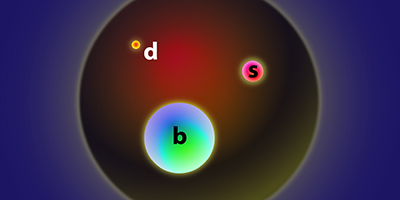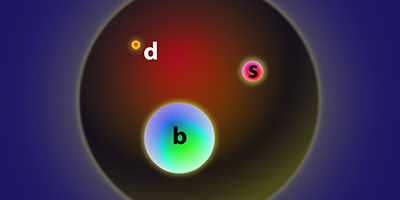Two New Particles Enter the Fold
Physicists at the Large Hadron Collider (LHC) have detected two never-before-seen subatomic particles. These particles were predicted by the quark model and estimated to have masses roughly six times that of the proton, but previous experiments have not run at high enough energy to produce these massive particles. The detections offer new precision measurements of the masses, which will place tighter constraints on particle physics theories.
Quarks come in three families: up/down, strange/charm, and bottom/top. In 2007, physicists observed the first particle with one quark from each family: , consisting of one bottom, one strange, and one down quark, giving it a negative charge of . However, this is just the lowest mass version of this three-family quark combination. Quark theory predicts the existence of two higher mass cousins of , called and , which are characterized by their spin of 1/2 and 3/2, respectively.
To confirm the existence of these short-lived particles, the LHCb experiment at CERN looked for evidence of decays in data from proton-proton collisions at energies of 7 and 8 tera-electron-volts. Specifically, they investigated decays into a neutral and a negatively charged pion ( ). They observed signatures for two particles at masses of 5935 and 5955 mega-electron-volts, corresponding to and . The results came as a surprise, as many models predicted that the was not massive enough to decay through this route, and a search at another CERN experiment had not found the equivalent decay of a closely related particle . Using the new, very precise mass measurements, theorists will be able to improve their models—specifically those that predict the mass of other quark-based particles.
This research is published in Physical Review Letters.
–Michael Schirber





